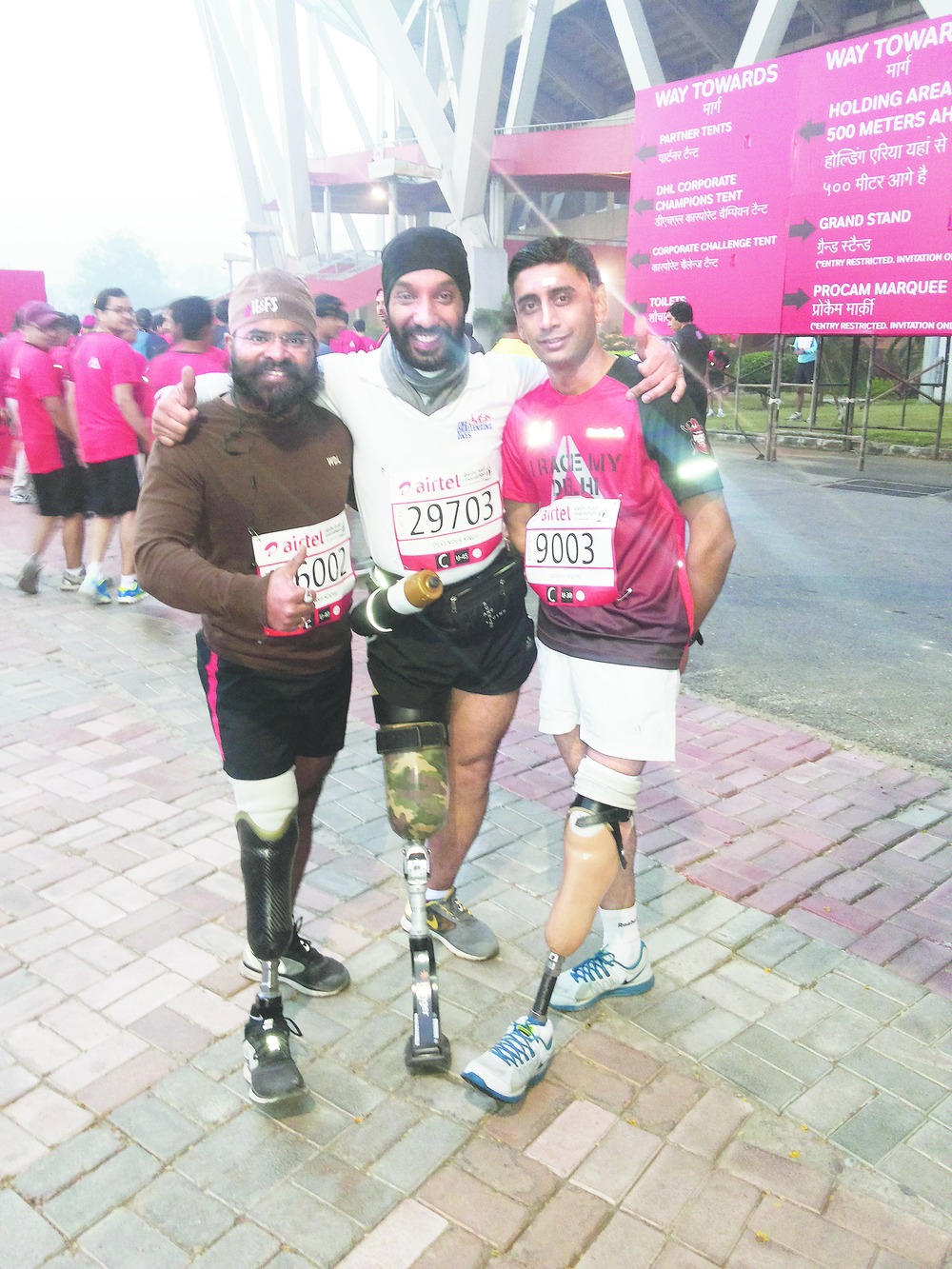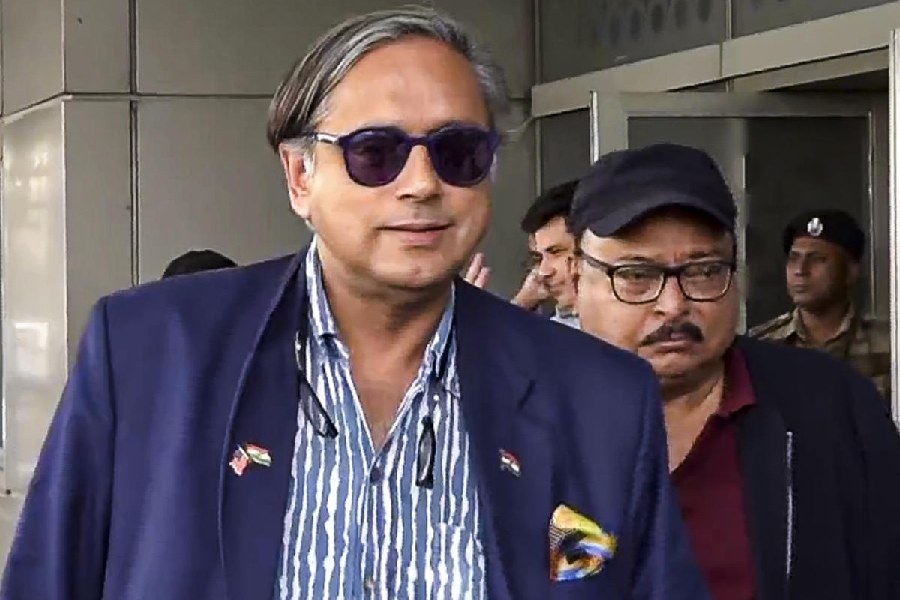

Ashok Munne has just returned from a 50-day expedition to Mount Everest. He had to abandon the climb to the peak when he was 350 metres away. "My metal leg turned ice cold and gave me frostbite," says the farmer-mountaineer from Murti, a village 75km from Nagpur.
If Munne had not fallen off a train and lost his right leg, he'd never have heard of mountaineering - or of triathlons, paragliding and scuba diving. "The accident was the best thing that happened to me," Munne, 32, says.
Munne was bedridden for one year after the accident in 2008 and two botched operations. "Everyone who visited me said I was finished. I wanted to prove that only my leg was gone, not me," he recalls.
Post-recovery, and fitted with an artificial limb, he started running, trekking and trained in mountaineering. He made his first high-altitude Himalayan trek to Kugti Pass, at 5181m, in Himachal Pradesh.
There's been no stopping him. He's trained in scuba diving, runs marathons and did a 3,000km bike expedition to Ladakh last year. Munne had wanted to paraglide off the Everest but couldn't find sponsors to foot the Rs 10 lakh bill.
He is currently training to compete in the Ironman triathlon - considered the world's toughest swim, cycle and run event - in Zurich this October. "I'll be the first Asian amputee to take on the triathlon," says Munne.
Clearly, you don't need legs to run. Like Munne, a growing number of amputees in India are coming out - in their walkers, carbon fibre blades and microprocessor-fitted limbs - to bring life back on its feet.
Shalini Saraswathi can't brush her teeth on her own. But the quadruple amputee ran the TCS 10km marathon in Bangalore last month. She's just miffed she couldn't complete the run in the 90-minute target she'd set for herself.
Saraswa-thi ran on a newly acquired pair of carbon fibre prosthetic blades - made famous by South African amputee athlete Oscar Pistorius, who took off his blades and walked on his amputated stumps in a court earlier this week in a bid to avoid a long spell in jail.
Saraswathi, deputy general manager, Firstsource Solutions, a Bangalore-based IT firm, lost her limbs to a rare bacterial infection three years ago. She was in bed for two years and put on weight. "Running started off as a way to be healthy. Over time, I started enjoying it - it gave me freedom and, in some twisted way, control over my body," she says. It took two years of strict training - which included running and Pilates - before she hit the road for the TCS run last month.
When D.P. Singh - an Indian Army officer who lost a leg in a grenade attack during the 1999 Kargil War - ran his first 21km marathon on carbon fibre blades in 2011, someone commented that he looked like he'd come straight from the sets of Star Wars. "No one had seen blade legs before," Singh recalls. He's run a dozen marathons since then and holds the Limca record for being the first Indian to do long-distance running on artificial limbs.
<,>Attitudes towards disability have changed a lot in India, notes Singh. "I run into a few amputees at every marathon I participate in. And they all brandish their prosthetics with élan," he says.
A 2003 Michigan Business School report states that there are 50-55 lakh amputees in India. According to varying estimates, 23,000-40,000 amputations are performed in the country every year. For long, the Jaipur foot was the only prosthetic solution available to them. But with globalisation, a growing number of Indian amputees are now buying imported, high-tech prosthetic products off-the-shelf. "There's a variety of limbs to pick from - carbon fibre blades, microprocessor-fitted prosthetics or bionic legs powered by artificial intelligence," Singh says.
The prices, though, are still prohibitive. A microprocessor-fitted limb costs Rs 14 lakh in India, while a carbon fibre blade comes for over Rs 10 lakh. If it's an above-knee amputation, an artificial knee will cost an additional Rs 3.5 lakh.
The carbon fibre blades that Saraswathi used for the TCS marathon were loaned to her by German prosthetics company, Ottobock, which was conducting trial runs before introducing the product in India. With the blades on, Saraswathi felt she was jumping on a trampoline wearing pointy high heels. "Once I got used to them, I felt like I'd grown wings," she adds.
Besides the advance in technology, a number of amputee support groups are also sprouting across India. Singh, for instance, started a group two years ago called The Challenging Ones, which handholds and helps amputees cope with limb loss.
Bringing people with disabilities into the mainstream is also on the group's agenda. "We use sports - especially long-distance running - as a method of inclusion in society," explains Singh. Running fit the bill because it needs no learning or gear. "Also, there's an immediate connect with fellow participants and the audience," he adds.
The Challenging Ones currently has 1,000 members - 100 of whom have participated in long-distance running events.
Till last year, the Delhi marathon used to organise a token 2.5km run for disabled participants. "We convinced the organisers that we didn't need the concession," says Singh, who lobbied to throw open the regular runs for people with disabilities. "This year, one amputee and three people on wheelchairs completed the 21km run - navigating potholes and traffic like everyone else," the blade runner adds.
Uday Bagde, a civil engineer based in Gandhidham, a small town in Gujarat's Kutch district, sank into depression when he lost a leg in a road accident in 2007. His worldview changed when he joined Singh's support group and ran his first 5km marathon in Cochin in 2015. "My self-confidence zoomed when I completed the run," he remembers.
Bagde is now training to up his game - his target is to run the 42km full marathon in two years. He runs four kilometres every day. "Since there are no professional trainers in Gandhidham, I have created a fitness regimen watching YouTube videos," Bagde says.
Bangalore-based IT professional Hema Subhash doesn't let a missing leg come in the way of living life king size either.
On February 3, 2010, she was hurrying home after work when she slipped and fell while getting off a bus. The bus ran over her left leg, which was amputated the next day.
Eight months later, Subhash joined back work. She got married and had a baby. "My leg was gone, but life was good. I wanted to take this message to others like me," says Subhash, 31, who started an amputee support group - One Step at a Time (Osaat) - in June last year, along with three friends. The group currently has 95 members.
Since an amputation makes the body prone to pain and structural deformities, Osaat conducts programmes aimed at keeping its members active and fit. It has organised swimming, badminton and table tennis camps and several of its members participated in the TCS 10K run last month.
Next month, 13 Osaat members will put up a dance show at a Bangalore mall. "We'll be showing off our shining prosthetic legs," says an elated Subhash.











